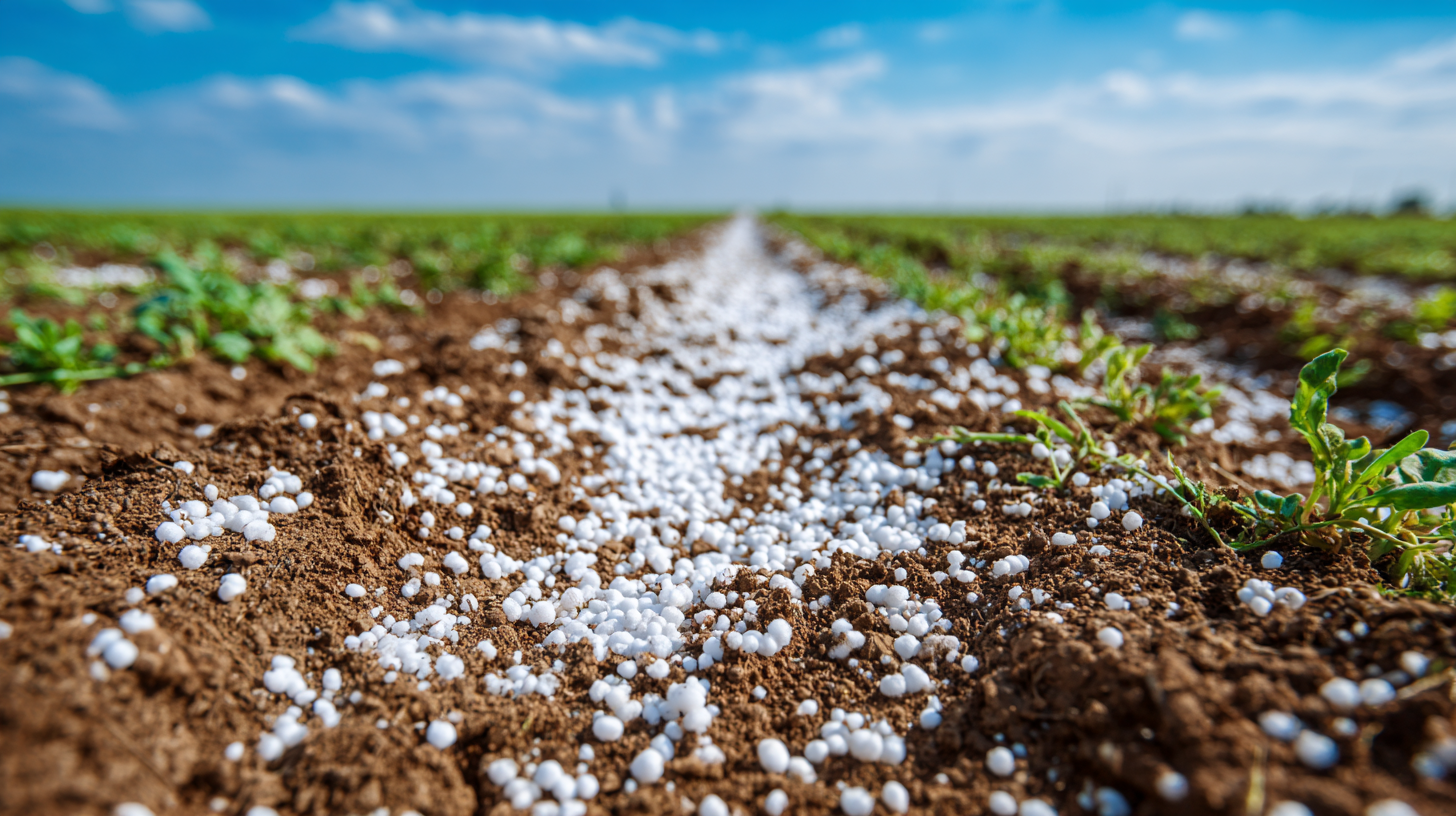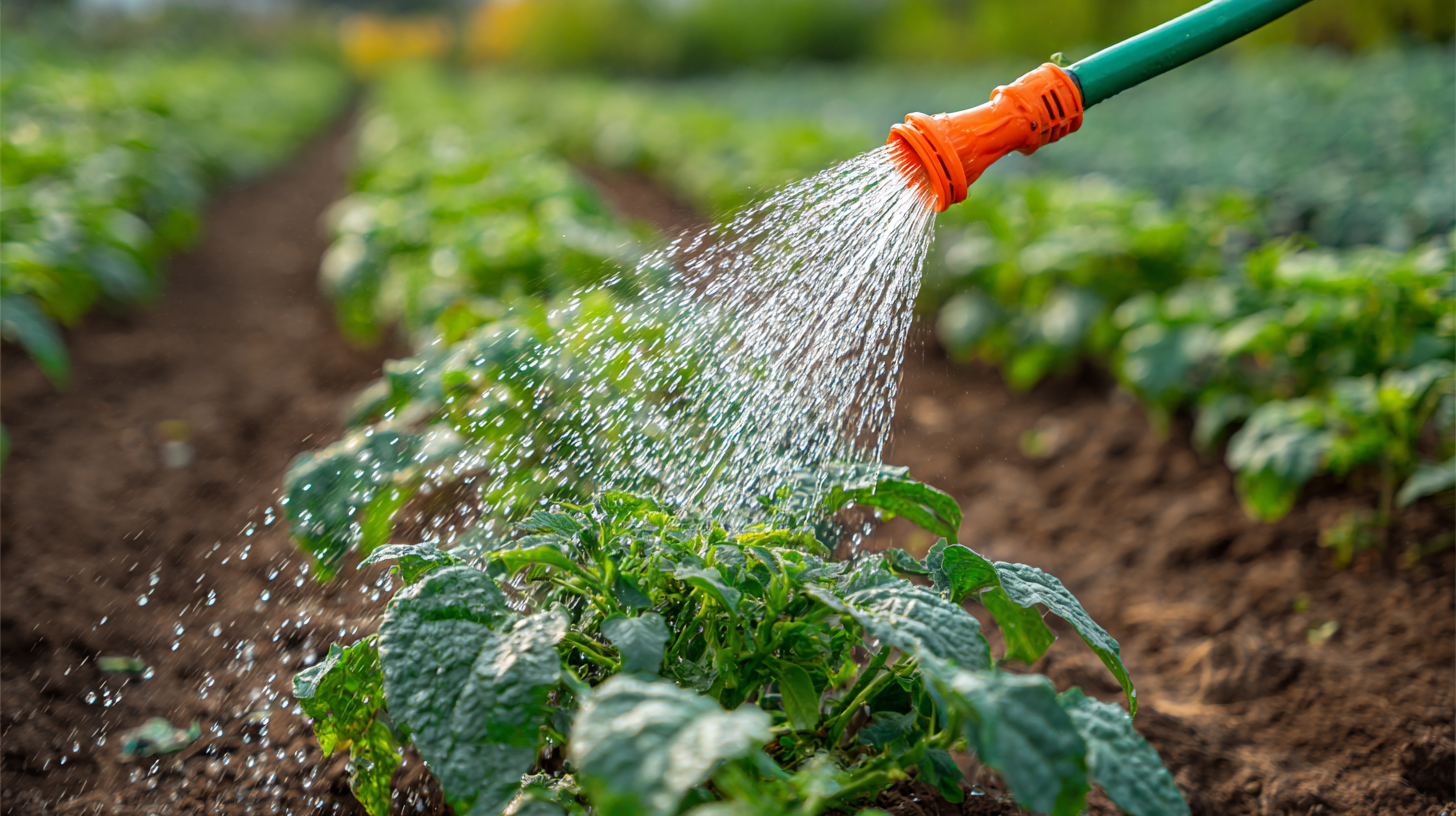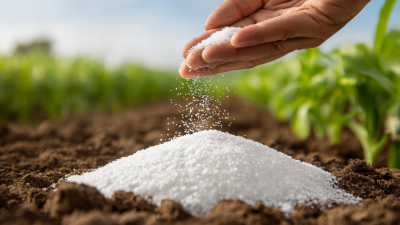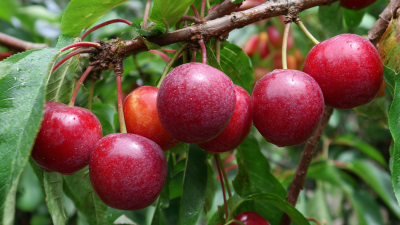The application of Water Soluble Phosphatic Fertilizers has gained increased attention in agricultural practices due to their ability to enhance nutrient availability and promote optimal plant growth. According to a report by the Food and Agriculture Organization (FAO), phosphorus is a critical nutrient, vital for key plant processes, and can increase crop yields by up to 20% when applied effectively. Furthermore, studies indicate that the use of water-soluble forms of phosphatic fertilizers ensures better uptake by plants, especially in soils with low phosphorus availability, which affects nearly 30% of the world's arable land. Harnessing the potential of these fertilizers not only supports sustainable agricultural practices but also aligns with global efforts to improve food security and productivity. Consequently, understanding best practices for utilizing Water Soluble Phosphatic Fertilizers is essential for farmers aiming to maximize their output and enhance soil health.

Water-soluble phosphatic fertilizers (WSPFs) are essential for optimal plant growth due to their readily available phosphorus, which plays a critical role in energy transfer and photosynthesis.
The composition of these fertilizers typically includes phosphoric acid, which is designed to dissolve quickly in water, enhancing phosphorus uptake by plants. Recent studies have highlighted the importance of phosphate solubilizing bacteria in the rhizosphere, which can significantly increase the agronomic efficiency of rock phosphate and elevate the effectiveness of WSPFs. By promoting the microbial activity in soil, these bacteria enhance the solubilization process, thereby maximizing phosphorus availability and improving crop productivity.
Furthermore, advancements in sustainable fertilizer management practices, such as anaerobic digestate use and the recycling of by-products like pig bones into phosphate fertilizers, are paving the way for more environmentally friendly agricultural systems. Innovations in fertilizer technology, including the development of hydrophobic coatings for granular fertilizers, are also aimed at enhancing nutrient delivery and reducing losses during storage and application. Ultimately, understanding the composition and benefits of WSPFs, alongside effective management strategies, is vital in tackling global challenges related to phosphorus use efficiency and promoting sustainable agricultural practices.
 Water-soluble phosphatic fertilizers play a crucial role in optimizing plant growth by ensuring the right balance of phosphorus levels, which are essential for various crops. According to the International Plant Nutrition Institute (IPNI), phosphorus is vital for energy transfer, photosynthesis, and nutrient transport within plants. Therefore, understanding optimal application rates for different crops is essential for maximizing yield and maintaining soil health.
Water-soluble phosphatic fertilizers play a crucial role in optimizing plant growth by ensuring the right balance of phosphorus levels, which are essential for various crops. According to the International Plant Nutrition Institute (IPNI), phosphorus is vital for energy transfer, photosynthesis, and nutrient transport within plants. Therefore, understanding optimal application rates for different crops is essential for maximizing yield and maintaining soil health.
Research indicates that crops such as corn, wheat, and soybeans have distinct phosphorus requirements. For example, the University of Illinois recommends applying 50 to 75 pounds of phosphorus per acre for corn and 10 to 20 pounds per acre for soybeans, depending on soil test results and expected yield goals. These rates not only support growth but also prevent nutrient runoff, contributing to sustainable agricultural practices. Moreover, adhering to the Fertilizer Institute’s guidelines can help farmers calibrate their fertilizer applications more effectively, reducing over-fertilization risks that can lead to environmental issues.
The timing of phosphorus application is equally significant. Studies from the Soil Science Society of America suggest that applying water-soluble phosphatic fertilizers during the early stages of crop growth—such as during planting—can enhance root development and overall plant vigor. Tailoring application rates and timing based on specific crop needs can substantially improve growth outcomes while supporting eco-friendly farming practices.
Timing your fertilizer application is crucial for maximizing the efficacy of water-soluble phosphatic fertilizers. Different growth stages of plants require specific nutrient inputs to optimize their development. For instance, during the early stages of growth, such as germination and seedling development, plants are particularly sensitive to nutrient availability. Applying phosphatic fertilizers at this stage can enhance root establishment and improve initial growth, setting a solid foundation for future development.
As plants transition to the vegetative phase, their need for phosphorus becomes even more pronounced. This is the ideal time to apply water-soluble phosphatic fertilizers to support robust leaf formation and overall biomass growth. Timing applications just before or during this stage allows for improved nutrient uptake, which can significantly boost plant health and yield potential. Additionally, during flowering and fruiting stages, a carefully timed application can help sustain nutrient availability, leading to better flowering outcomes and increased fruit set. Understanding the critical growth stages and aligning fertilizer applications accordingly ensures that plants receive optimal nutrition when they need it most.

Combining water-soluble phosphatic fertilizers with other essential nutrients can significantly enhance plant growth by creating synergistic effects. Research from the International Fertilizer Association indicates that the simultaneous application of phosphorus (P) and potassium (K) can increase crop yields by up to 30%. This synergistic relationship is particularly beneficial in nutrient-deficient soils where plants struggle to uptake essential minerals effectively. When water-soluble phosphatic fertilizers are used alongside micronutrients such as zinc or boron, they can improve overall nutrient efficiency and promote stronger root development.
Tips for optimal use include applying these fertilizers during the early growth stages, when plants are most responsive to nutrient uptake. It's crucial to ensure proper soil pH levels, ideally between 6.0 and 7.5, to maximize nutrient availability. Additionally, conducting a soil test can help determine specific nutrient deficiencies, allowing for a targeted approach to combining fertilizers. By thoughtfully integrating water-soluble phosphatic fertilizers with other nutrients, growers can achieve healthier plants and improved crop performance across diverse agricultural settings.
| Nutrient Component | Function | Optimal Combination | Application Rate (kg/ha) |
|---|---|---|---|
| Water Soluble Phosphate | Promotes root development and flowering | With Potassium | 50-100 |
| Nitrogen | Encourages foliage growth | With Phosphate | 100-150 |
| Calcium | Strengthens cell walls and prevents diseases | With Water Soluble Phosphate | 70-120 |
| Magnesium | Essential for photosynthesis | With Nitrogen and Phosphate | 30-50 |
| Sulfur | Improves protein synthesis | With Water Soluble Phosphate | 20-40 |
Monitoring plant response after the application of water-soluble phosphatic fertilizers is crucial for evaluating their impact on growth and yield. To effectively assess these effects, a systematic approach is necessary. Initially, set clear growth parameters such as plant height, leaf number, and overall vigor. Document the baseline measurements before fertilizer application, allowing for a comparison against post-application results. Regular intervals of observation should be established to capture changes in growth; these might include weekly or bi-weekly assessments depending on the growth rate of the plants.
In addition to physical growth measurements, yield assessments should focus on quantitative metrics such as fruit or seed production. Conducting yield trials in controlled conditions can help isolate the effects of the fertilizer. Observations regarding the quality of the yield—such as size, taste, or nutritional content—should also be recorded. By combining quantitative and qualitative data, it is possible to gain a comprehensive understanding of how water-soluble phosphatic fertilizers influence overall plant performance, ultimately guiding future fertilizer application strategies for optimal results.
This chart illustrates the effect of different concentrations of water soluble phosphatic fertilizers on plant height and yield over a growing period of 12 weeks.






